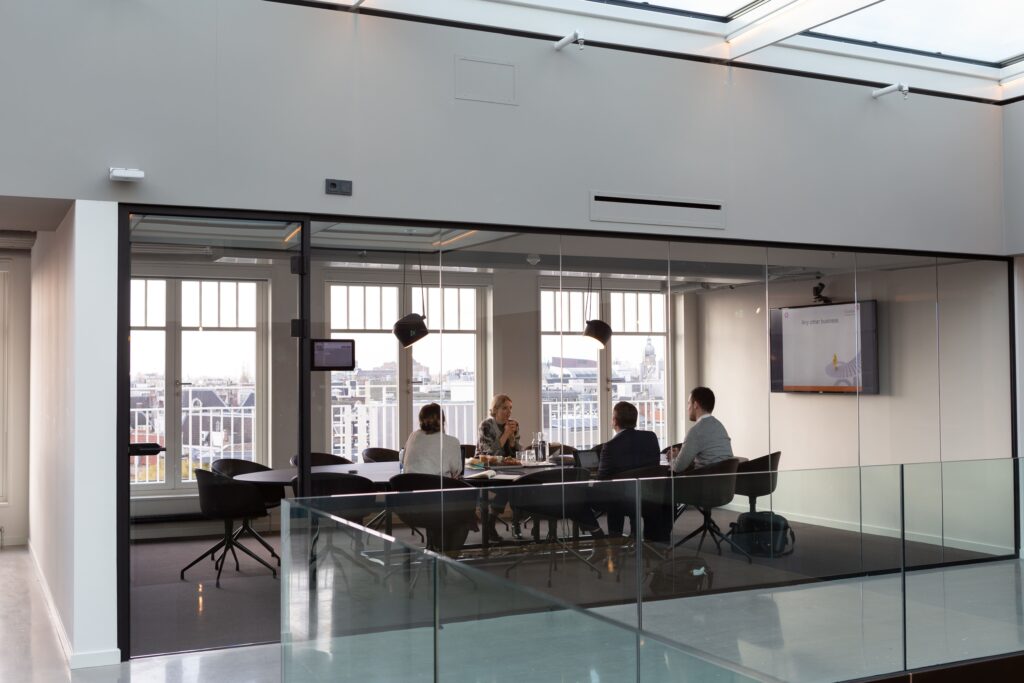So, you’re ready to start your career in Japan. You’ve applied for the ideal job and got the interview. The last hurdle is the job interview. Job interviews can be stressful anywhere – even more so in a country known for its strict etiquette and unspoken rules. No need to worry though, as we’ll guide you through:
- Dressing for a Japanese job interview
- Arriving at a Japanese job interview
- Answering questions during a Japanese job interview
- Leaving a Japanese job interview
1. Dressing for a Japanese Job Interview

When interviewing for jobs in Japan, there is an essentially uniform way to dress. It is so common that it is colloquially known as a “recruit suit” (リクルートスーツ Rikurūtosūtsu). These suits are specifically for those in the process of job hunting and differ somewhat from the normal office attire of those already in employment.
You can find a recruit suit at shops such as:
More About Job Hunting in Japan
Want to land that interview? Check out our articles on Japanese resume formats and the Shokumukeirekisho (職務経歴書), also known as the other Japanese resume.
Already landed that interview? We’ll help you understand Japanese work culture and just how much Japanese you need to work in Japan.
So what exactly does a recruit suit look like? There are slightly different ‘rules’ for women and men.
Women
- White, button-up shirt
- Black jacket
- Black, knee-length skirt
- Sheer tights
- Plain black heels, usually between 3 to 5 centimeters in height.
- You can wear make-up, but it should be simple and natural-looking
- Tie your hair up in a neat, low ponytail.
Men
- White, button-up shirt
- Black Jacket
- Black trousers
- Black dress shoes.
- Simple, plain black belt
- There is more freedom of choice when it comes to ties, but a muted color that doesn’t grab too much attention is best
- It’s best to have a clean-shaven face with a short, neat haircut
General Tips
- Dark colors such as navy and dark grey may also be acceptable, but black is usually the best bet.
- It is not advisable to wear strong cologne or perfume
- It’s better to avoid branded or flashy accessories. In fact, it is best to avoid wearing any jewelry at all.
- A backpack may look unprofessional – use a plain black bag instead.
- Your bag should be able to hold A4-sized documents and stationery necessary for the interview.
- Wear a watch to tell the time, because checking your phone is considered rude.
We help freelancers
With World in Freelance, you can find:
- Fully remote options – Work anywhere you want.
- Passion projects – Spend time on what inspires and excites you.
- Japanese language upkeep – Team up with top Japanese tech companies.
2. Arriving at a Japanese Job Interview

The very beginning of the interview may be the most important part, as this is when you make your initial impression. Here are some tips and tricks to help you make the best of this short window.
Getting There
As with all job interviews, it is important to be punctual. If your train is delayed, immediately let the company know. Next, ask the staff at the train station to give you a train delay certificate (Densha Chien Shoumeisho 電車遅延証明書) to prove it.
In the Lobby
Ideally, you should arrive at the office between 5 and 10 minutes in advance. Make sure that your phone is on silent at this point. The moment you walk into the reception area is essentially the start of the interview, and it does not end until after you leave the building. Introduce yourself and simply wait quietly. You can use this time for last-minute mental preparation.
Stepping Into the Meeting Room
When the interviewer calls you in, knock on the door three times (people usually only knock twice on bathroom doors) and say “excuse me” (Shitsurei shimasu 失礼します). Wait outside the door until you hear the interviewer say please enter (Douzo どうぞ) then enter the room, close the door, face the interviewer and say shitsurei shimasu again. Bow for a few seconds facing the interviewer.
Sitting Down
Next, approach the open chair. Rather than sitting down, first, formally introduce yourself with a simple “My name is_____, it is a pleasure to meet you” (______to moushimasu. Douzo yoroshiku Onegai shimasu ____と申します。どうぞ宜しくお願いします). Bow once more. It is best to have your arms at your sides to make bowing easier. The interviewer should then invite you to sit down by saying “Please sit down” (Douzo suwatte kudasai どうぞ、すわってください ).
Body Language
Once you sit down, it is important to pay attention to how you sit. Your legs should be together and touching at the knees. Your hands should be palms down, resting on your lap. Pay attention to your posture as well – it’s professional to sit upright with your spine extended. Although you might have the urge to relax after some time, it is advisable to keep your body language the same throughout the interview.
3. Answering Questions During a Japanese Job Interview

As you have realized by now, there are a lot of rituals and rules to follow in a Japanese job interview scenario. As you can imagine, there is also a common list of questions for job seekers. These are similar to those asked in other countries, though, so no need to worry.
Introducing Yourself
It’s common to start with a brief self-introduction. You can use this to tell the interviewer about some of your academic and professional achievements, and also more about yourself. Do however remember to keep it polite and professional! As a foreigner, the interviewer may also want to know why you came to Japan, how long you’ve been in the country, if you would be confident working in a Japanese company, and so on.
Answering Job-Specific Questions
Next, the interviewer will ask what you know about the company and what they produce. Continuing on that, they could ask what you know about the specifics of the position. This is an opportunity to highlight previous experience that makes you a good candidate for this position. They might also ask why you applied for this job. To see whether you would be a good fit for the company culture, you may also be asked questions about your relevant background, work ethic, motivation, and problem-solving skills.
4. Leaving a Japanese Job Interview

The interviewer will typically announce the interview is over (sore dewa, mensetsu wa kore de shuuryou desu それでは、面接はこれで終了です). You can reply with “Thank you very much for your valuable time today“ (honjitsu wa kichouna ojikan o itadaki, doumo arigatou gozaimashita 本日は貴重なお時間をいただき、どうもありがとうございました). Finally, after getting up from your chair, you can thank the interviewer again. Make sure to use the formal expression of thanks (doumo arigatou gozaimashita どうもありがとうございました).
Finally, give a respectful bow, approach the door, turn around and say excuse me (shitsureishimasu 失礼します) while bowing once more. After passing the threshold, it’s a good idea to bow one more time just before closing the door. Be sure to stay in interview mode until you are outside the building.
Need More Tips and Advice?
Now that you know how to take on a job interview in Japan confidently, why not go over to the Inbound Technology job board and have a look at the open positions on offer? Inbound Technology‘s mission is to help foreigners find work in the tech industry in Japan. You can get in touch with one of our helpful career advisors here or on LinkedIn.